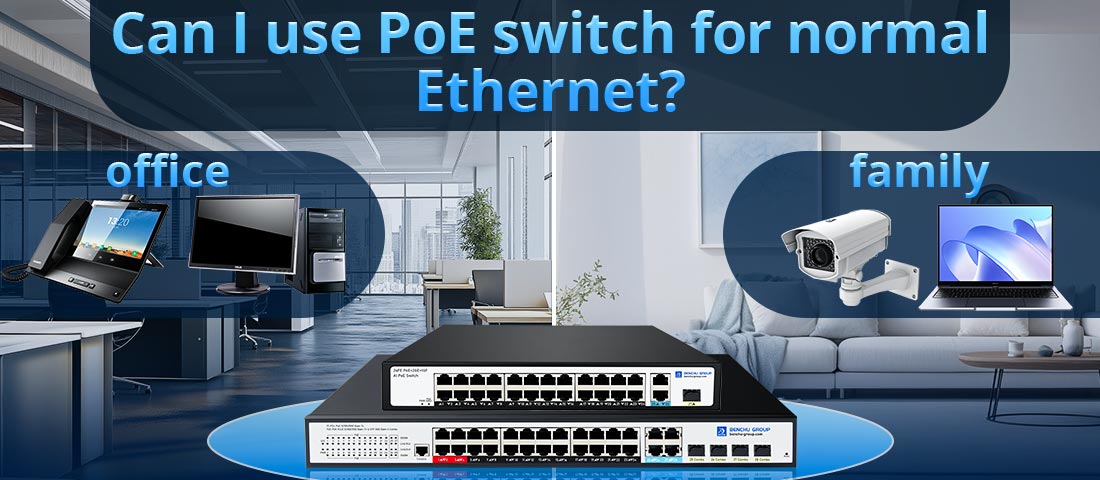Power over Ethernet (PoE) switches are widely used in modern networks to provide both data and power over a single Ethernet cable. This capability is ideal for devices like IP cameras, wireless access points, and VoIP phones. But what if you want to use a PoE switch for regular Ethernet devices like computers, printers, or non-PoE routers? The good news is that PoE switches can indeed handle normal Ethernet connections safely and efficiently.

Advantages of Using a PoE Switch for Normal Ethernet
Flexibility:
PoE switches can seamlessly support both PoE-enabled and non-PoE devices, eliminating the need for separate switches.
Scalability:
Even if your current setup doesn’t require PoE, using a PoE switch prepares your network for future additions of devices like IP cameras or access points.
Simplicity:
Consolidating power and data connections into a single device reduces clutter and simplifies network management.
Key Considerations
Cost:
PoE switches are more expensive than standard Ethernet switches. If you don’t plan to use PoE devices, a non-PoE switch may be a more cost-effective option.
Power Consumption:
PoE switches may draw slightly more power due to their dual-functionality, though the difference is negligible in most cases.
Compatibility:
Ensure the PoE switch adheres to industry standards like IEEE 802.3af or 802.3at for safe and reliable operation with both PoE and non-PoE devices.
You can use a PoE switch for normal Ethernet devices without any issues. Its ability to detect and adapt to the connected device ensures compatibility and safety.
Small Offices: Use one PoE switch to power VoIP phones and connect regular devices like desktop computers.
Home Networks: PoE switches can simplify smart home setups, connecting devices like IP cameras alongside traditional devices like laptops.
Mixed Workspaces: Hybrid networks with both PoE and non-PoE devices benefit from the versatility of PoE switches.